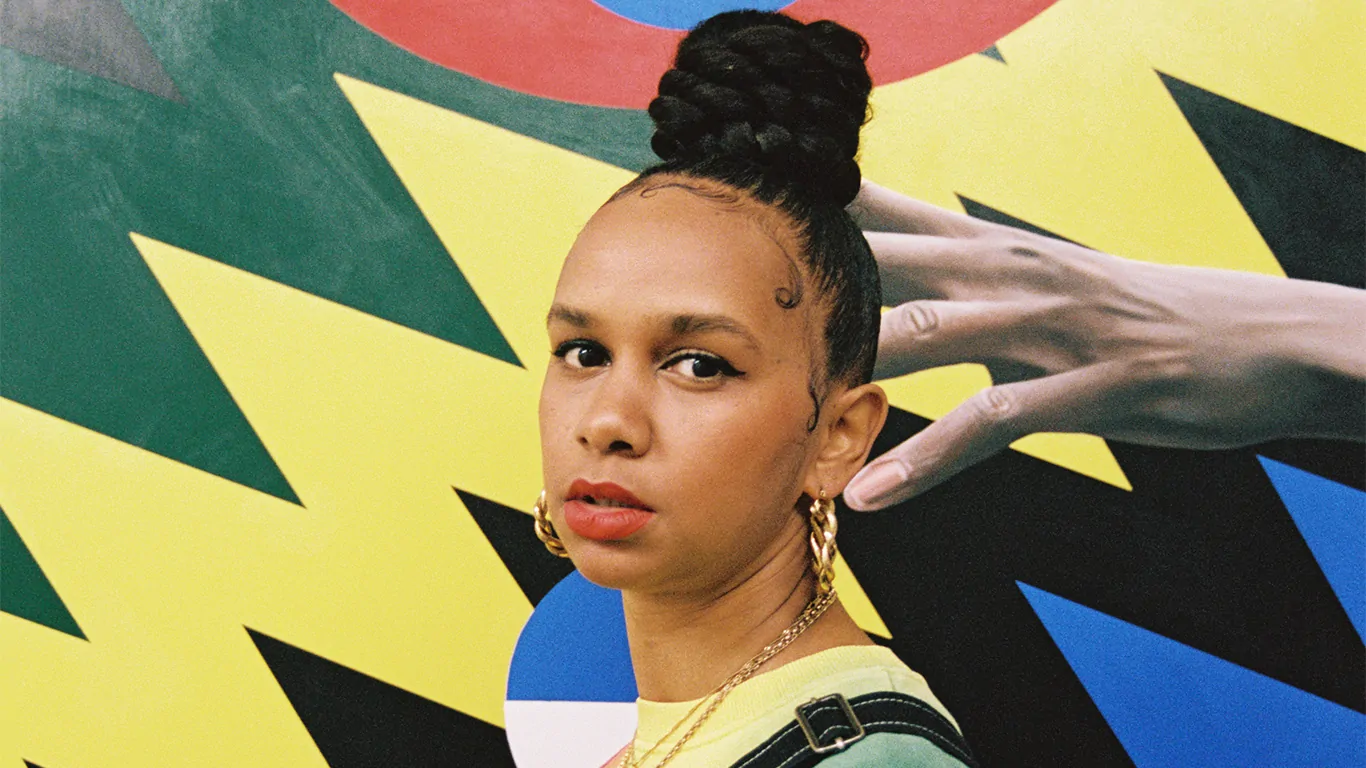The work of London-based artist Lakwena Maciver is an expressive cacophony of repetitive colours, geometric shapes, and typography interlocking in a symphony of form like fluid Lego, assembling aesthetically pleasing structures that are declarative in their appearance, spelling out empowering poetic idioms that express perseverance in the face of adversity.
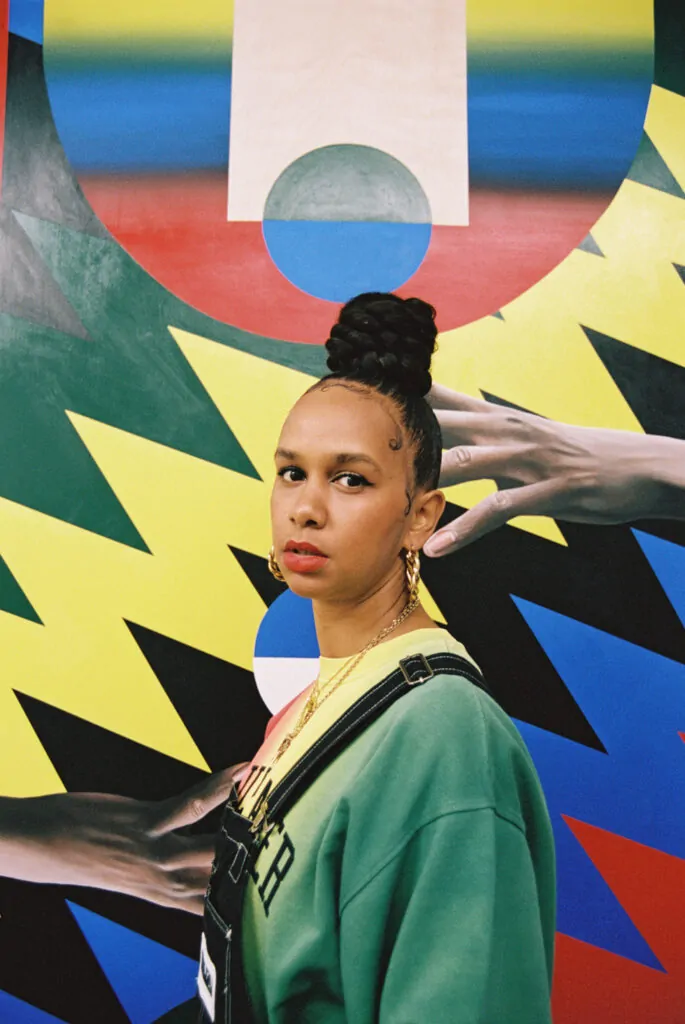
Credit Danika Magdelena
I look at words everywhere, and I kind of gather up images that I’m attracted to. There isn’t a science to it but I just play until it feels right.
Lakwena
Lakwena’s pieces operate as a kind of visual poetry—each one a striking ode that exudes a regal, psychedelic energy, its kaleidoscopic colours pulsating with rhythm the longer you observe them. Encountering her work feels like receiving a blessing from a sacred minister of visual proverbs; there is an innate joy embedded within it. Whether adorning murals or tube station rooftops, Lakwena infuses whatever she touches with her visual vernacular, a commanding union of word power and colour psychology that invites you to connect her with compelling aphorisms.
In her piece “TIL THE SUN COMES UP” created this year for the guests of the Universal Music BRITs after-party. It’s a brilliant execution of optical art that is both hypnotic and immersive. Fluctuating between order and disorder, the centre of the piece features two hands that add a human element; their movement seems to symbolise both the physical and spiritual amidst kaleidoscopic patterns and undulating curves.
This evokes a duality of chaos and celebration in the pop-esque piece. Boldly written at the top of the image is the phrase ‘TIL THE SUN’ in multicoloured text, while at the bottom, ‘COMES UP.’ This is Lakwena at her best, completing the work with a trademark uplifting phrase—a nod to endurance and the promise of renewal.
Lakwena has steadily earned international recognition, leaving her mark in cities from London to Paris, Rotterdam to New York, and Los Angeles to Miami. Her exhibitions have graced prestigious institutions like Tate Modern, Tate Britain, the Yorkshire Sculpture Park, Somerset House, the Southbank Centre, and the Rotterdam Kunsthal. When working in the public sphere, Lakwena’s works are no less impressive—the expansive mural shrouding a London electrical substation stands as one of the largest public artworks in the UK. Other projects have found their place in unexpected spaces: a juvenile detention centre in Arkansas, a monastery in Vienna, and the iconic Bowery Wall in New York City.
Most recently, Lakwena has followed in the footsteps of legendary artists as she designs the poster for the 59th Montreux Jazz Festival. Joining the festival’s prestigious list of poster creators—including Warhol, Haring, Bowie, and Walala—Lakwena brings her signature style to create the first typographic poster in the event’s history.
The kaleidoscopic poster, infused with bold shapes and the uplifting message ‘ALL YOU SEE IS GLORY’ in capital letters, was inspired by the iconic Nina Simone performance of “Stars” at Montreux in 1976, composed by Janis Ian in 1974. Reflecting on this, Lakwena shared, ‘I was researching the festival and I found out about Nina Simone’s 1976 performance. It’s so incredible, so moving—the intimacy, it felt really raw, very real.’
Designing the Montreux Jazz Festival poster has placed Lakwena herself among the greats who have transformed their creative expressions into timeless messages for the world to see. We caught up with Lakwena to learn more about her practice, inspiration and designing the 59th Montreux Jazz Festival poster.
Hi Lakwena, thank you for joining us. To start, could you share a bit about your journey into the arts? Were there any pivotal moments or influential experiences that inspired you to pursue a career as an artist?
Lakwena: I always drew as a child, and I was good at it. I never considered being an artist when I grew up as I knew there wasn’t much financial stability. But various things happened in my life whilst growing up that changed my priorities and I eventually realised it was my natural inclination to make art so that’s what I was going to pursue.
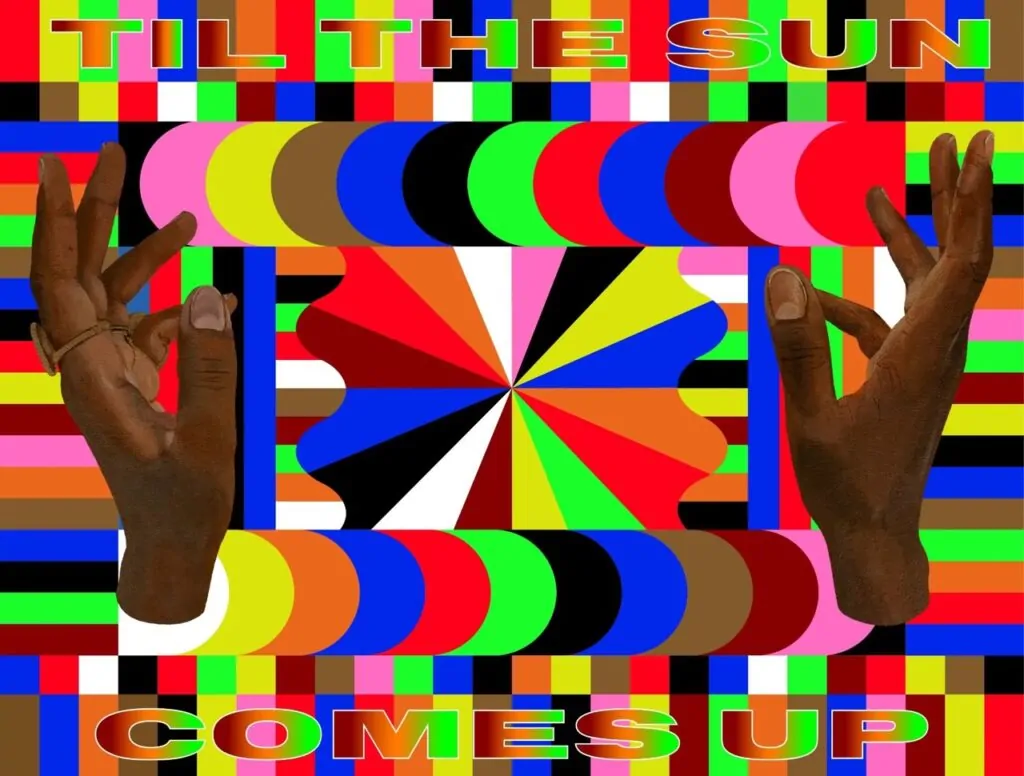
Acrylic on wood panel 122 × 91cm
Image courtesy of the artist
Your work frequently integrates text in a way that’s both visually captivating and deeply meaningful. How do you balance the visual and linguistic elements, and what’s your approach to creating “visual poetry” that speaks beyond words?
Lakwena: I’ve definitely been thinking of it as visual poetry recently. It’s all quite intuitive. I look at words everywhere, and I kind of gather up images that I’m attracted to. There isn’t a science to it but I just play until it feels right.
As an artist of British and Ugandan descent, how do your dual cultural backgrounds influence your work? Are there specific visual or thematic influences from your heritage that have shaped your exploration of identity and legacy?
Lakwena: I think just the nature of being from two cultures puts you on the boundaries and can mean that you see things as a slight outsider, which can sometimes bring about interesting outcomes. I think culturally I have often felt like I was looking in on places I wasn’t totally part of, and I was therefore maybe able to see things in a different way from other people. There’s an order and a balance, but also an eccentricity to Britishness that I appreciate, and that probably plays out in our shared visual culture.

Image courtesy of the artist
I predominantly grew up in Britain, though some of my most cherished childhood memories are of East Africa, so a lot of my feelings of desire, longing and nostalgia are caught up in Africa. Also, like many people from the African diaspora, I have always sought out and longed for a stronger connection with my Ugandan heritage, and I’m also aware of my being part of the global African diaspora and what that means culturally – all the ways in which the Diaspora has influenced contemporary popular culture.
Considering your practice of using language in visual art, what are your thoughts on the responsibility artists carry when using words in public spaces? How do you choose the statements or messages to share?
Lakwena: I’m really aware of my responsibility as an artist, particularly when making work in public spaces. I think this has become even more significant to me since having my kids. I’ve always been very interested in the role of the artist as ‘mythmaker’. There’s an acknowledgment that I am informing and creating culture, and telling stories about who we are, what matters, what is important. So yes, that’s something that is always in the forefront of my mind.
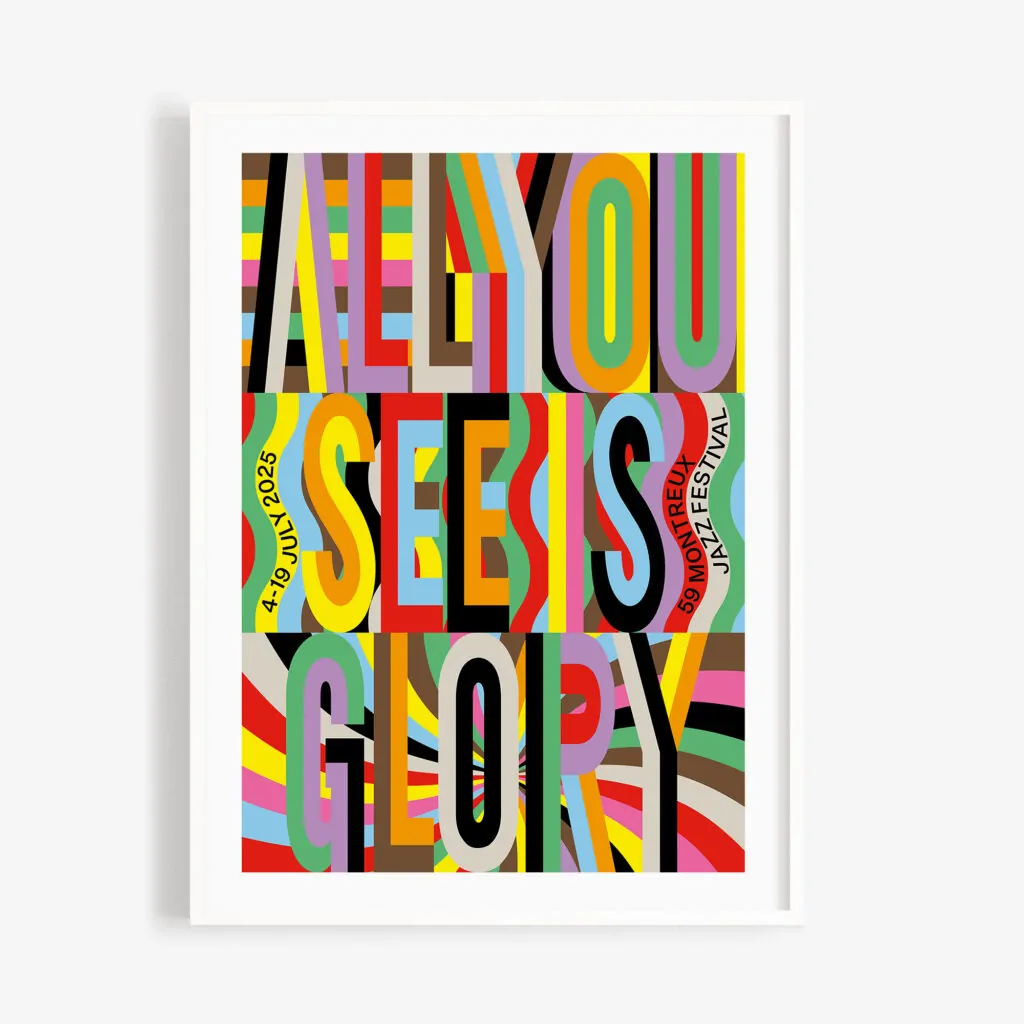
59th Montreux Jazz Festival Poster
In your recent project, you designed the 59th edition of the Montreux Jazz Festival poster, drawing from Nina Simone’s iconic performance and the song “Stars.” How did you approach translating such a powerful musical moment into visual form? Could you share more about your process in capturing the emotional depth of that specific performance in your design?
Lakwena: I wasn’t setting out exactly to translate it into visual form. I was just inspired by it and moved by it, and then I made the work from that place. It was a beautiful performance, very raw, very intimate. You might notice that the palette I used was very vibrant and kind of psychedelic, but a little warmer and a tiny bit more muted than usual. The white in particular was an off-white, and this was me thinking about the warmth and the rawness of the performance, and wanting to evoke something of that.

59th Montreux Jazz Festival Poster
Your piece “ALL YOU SEE IS GLORY” hints at a critique of society’s fascination with fame. How do you think our culture’s obsession with celebrity and visibility shapes your work, and how do you approach subverting or questioning these themes in your art?
Lakwena: I’ve always had an interest in what and who our society decorates. Who it holds up and glorifies. And I don’t think it’s always helpful who we do that to. I think it can be really destructive. It’s definitely something that I think about a lot and do try and subvert in my work. To some extent, even where my work is shown, the nature of it often being in very accessible public spaces, is to some extent subverting the hierarchy of who and what is valued in our society and our visual culture.
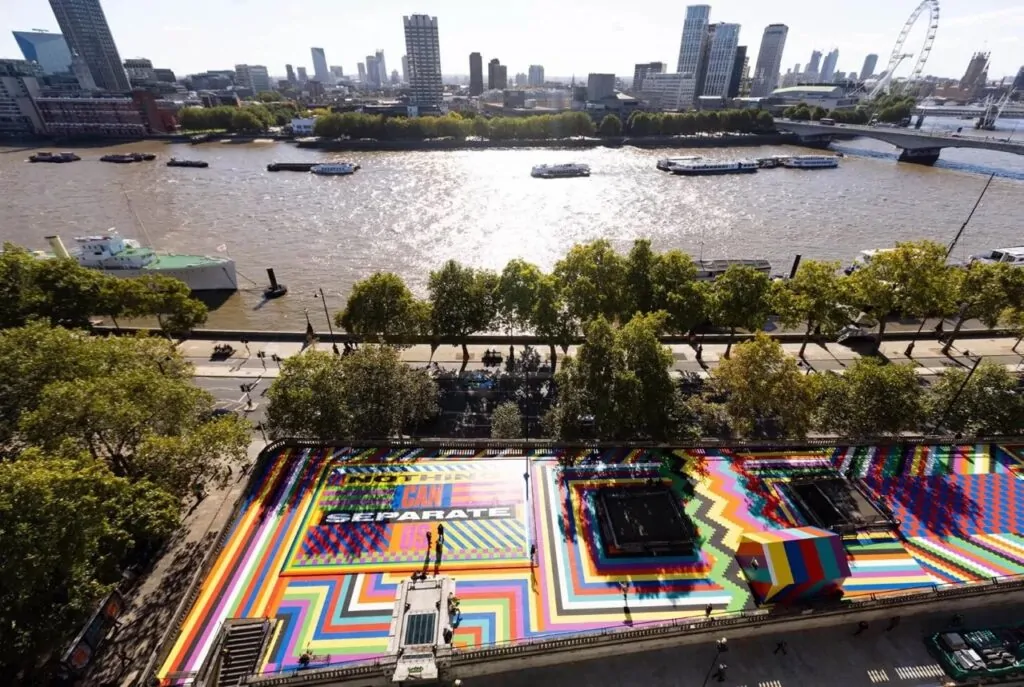
Looking ahead, are there any themes or projects you’re excited to explore in the near Future?
Lakwena: I’ve got a show in Paris in 2025 which I’m really excited about, and will involve a new body of work which is developing my paintings into a new direction.
Finally, how would you describe your philosophy of art? How has it evolved over time, and what role does it play in guiding your life and career?
Lakwena: I’m still figuring it out as I go along. I’m aware there’s this whole commercial side to things, and a game to be played, in order to make money, which we all need to live. I’m not naive about that. But I also genuinely believe in the capacity of art and artists to gather people together towards something good and, I think, transcendent. And that’s something I’m excited to continue growing in my understanding of.
More information on Lakwena head over to her website here
For more information on the Montreux Jazz Festival, head to their website here
©2024 Lakwena


